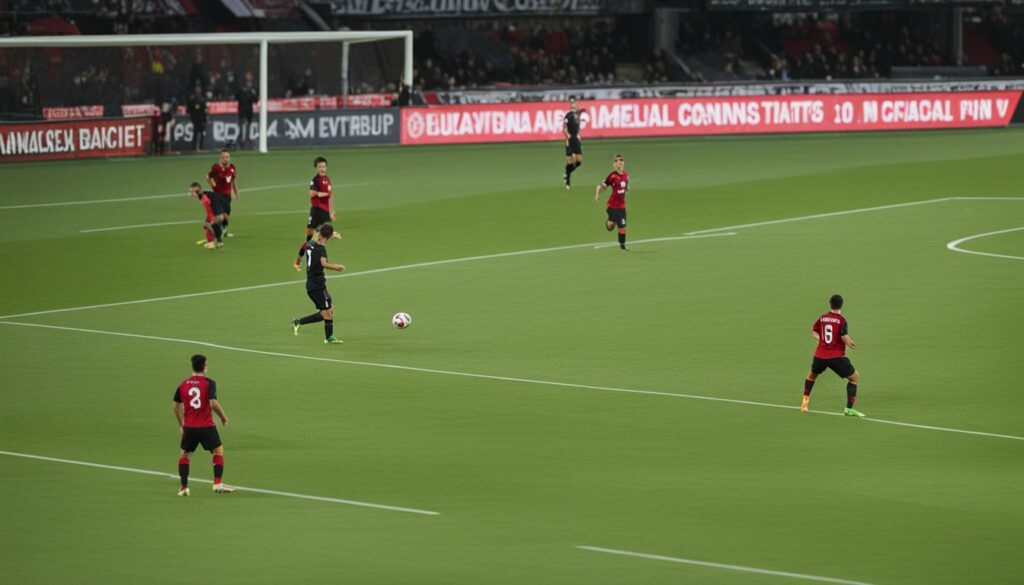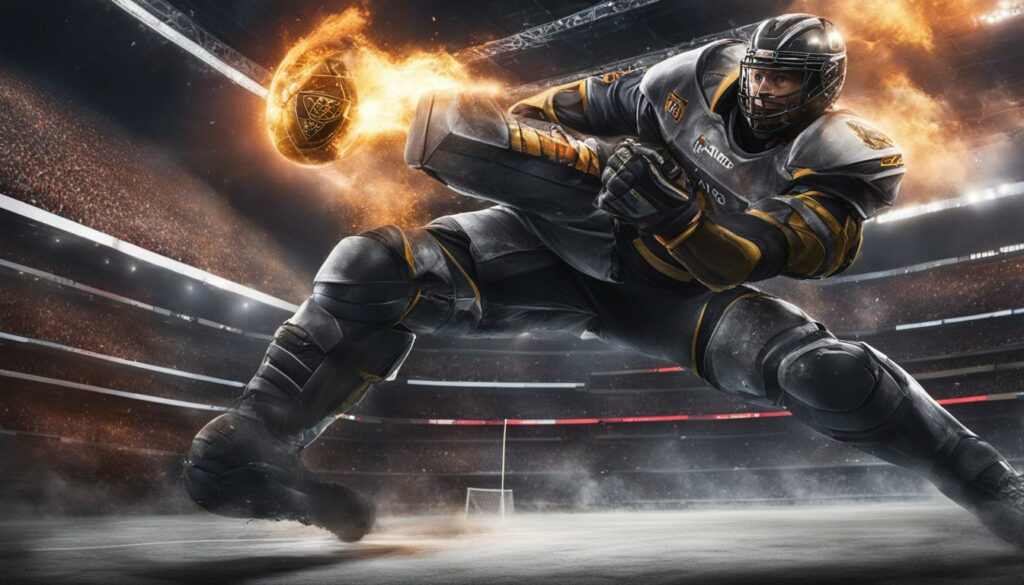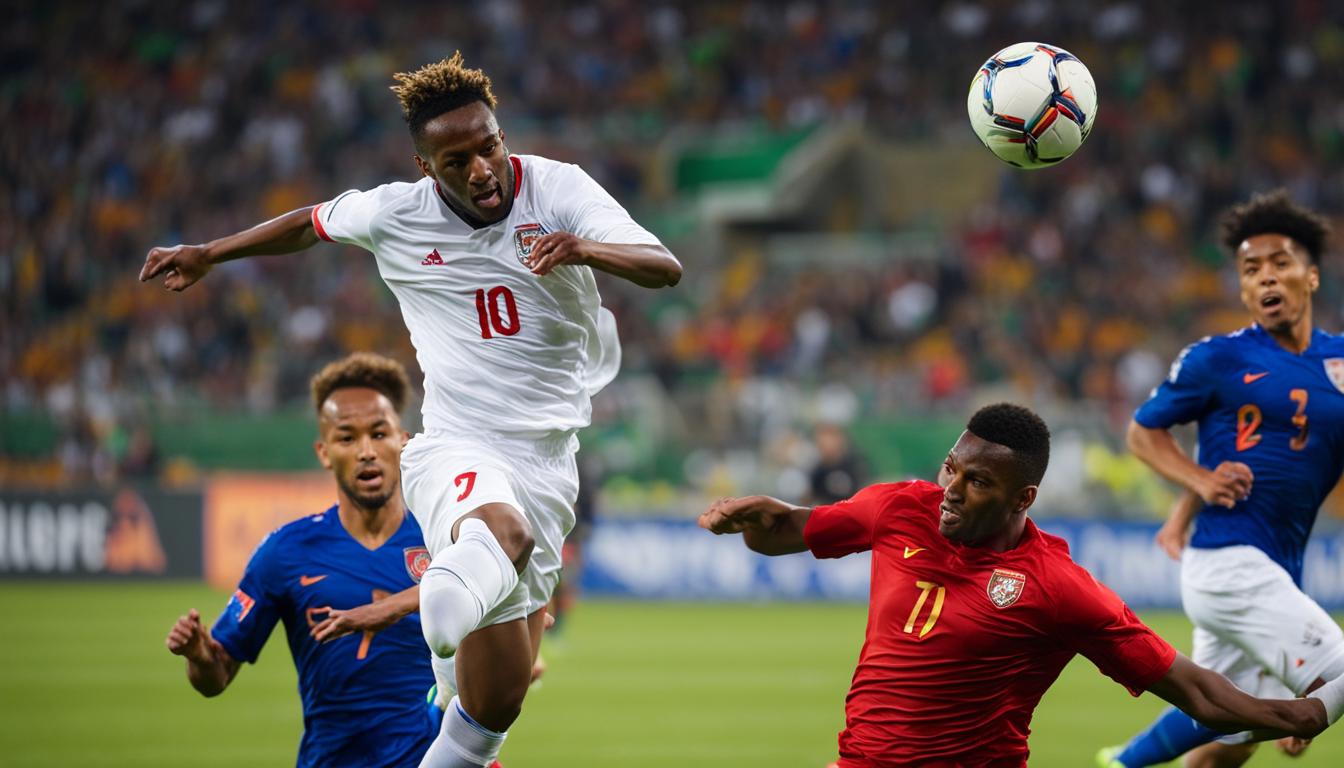As a center back, your role on the
Key Takeaways:
- The center back position is vital for defensive stability in
soccer - Duties include organizing the defensive line and marking opposing players
- Tactical knowledge, defensive strategies, and leadership skills are key for center backs
- Physical conditioning and mental toughness are crucial for excelling in the role
- Mastering technical skills, such as ball handling and passing, is essential for center backs
Understanding the Different Types of Center Backs
In the world of
One type of center back is the sweeper. The sweeper center back acts as the last line of defense, often positioned behind the other center back. Their main responsibility is to make crucial interceptions, clear loose balls, and provide cover for the defensive line.
Another type of center back is the stopper. Stoppers focus on marking and shutting down opposing attackers. They are physical and tenacious, always ready to challenge for the ball and disrupt the opponent’s attacking plays.
Lastly, we have the ball-playing center backs. These center backs possess strong technical skills and are comfortable with the ball at their feet. They not only excel in defensive duties but also contribute to the team’s attacking play by initiating attacks from the backline.
| Type of Center Back | Responsibilities |
|---|---|
| Sweeper | Last line of defense, interceptions, clearing loose balls |
| Stopper | Marking, shutting down attackers, physicality |
| Ball-playing | Strong technical skills, initiating attacks from the back |
It’s important to note that the role of a center back can also vary depending on the formation being played. Some formations require center backs to focus more on defensive duties, while others may prioritize their involvement in the team’s build-up play. Center backs are versatile players who can adapt to different tactical systems and contribute to both the defensive and offensive aspects of the game.
The Importance of Game-Reading and Positioning
Game-reading and positioning are critical elements for center backs to excel in their role on the
The ability to read the game involves constantly assessing the positioning of both teammates and opponents. This allows center backs to determine the most effective defensive strategy, whether it’s stepping up to press an attacker or dropping back to cover space. Proper positioning is essential for center backs to be in the right place at the right time, making it harder for opponents to penetrate the defensive line.
In addition to spatial awareness and anticipation, game-reading and positioning require strong communication skills. Center backs must effectively communicate with their teammates, providing instructions and ensuring everyone is aligned defensively. This coordination helps minimize gaps in the defensive structure and prevents potential goal-scoring opportunities for the opposition.
Key Tactics for Game-Reading and Positioning:
- Constant scanning: Center backs should maintain awareness of the entire field and always be vigilant for potential threats or opportunities.
- Analyzing opponents: By studying the habits and tendencies of opposing players, center backs can better predict their movements and make preemptive defensive actions.
- Communication: Effective communication with teammates ensures everyone is on the same page, allowing for coordinated defensive efforts and minimizing defensive gaps.
- Adjusting positioning: Center backs should be adaptable and able to adjust their positioning based on the game situation, the position of the ball, and the movements of opponents.
Table: Center Back Game-Reading and Positioning
| Tactic | Description |
|---|---|
| Constant scanning | Awareness of the entire field to identify potential threats or opportunities. |
| Analyzing opponents | Studying the habits and tendencies of opposing players to predict their movements. |
| Communication | Effective communication with teammates to coordinate defensive efforts. |
| Adjusting positioning | Adapting positioning based on game situation, ball position, and opponent movements. |

Essential Technical Skills for Center Backs
As a center back, mastering essential technical skills is crucial to excel in your role on the
Ball Handling
Center backs need to have excellent ball handling skills to maintain control and possession of the ball under pressure. This includes mastering your first touch, which allows you to receive and control passes effectively. It’s important to be aware of your positioning on the field to receive the ball in advantageous positions, enabling you to make quick decisions and distribute the ball efficiently.
Passing Techniques
Accurate passing is essential for a center back to contribute to the team’s attacking plays and build from the back. Center backs should be proficient in various passing techniques, including long balls, diagonal passes, and through balls. These passing techniques allow you to bypass the opposition’s midfield lines and initiate attacking moves, creating opportunities for your team to score.
To summarize, center backs must prioritize developing their ball handling and passing skills. By mastering these technical aspects of the game, center backs can contribute significantly to both the defensive and offensive capabilities of their team.
| Technical Skills | Description |
|---|---|
| Ball Handling | Mastery of first touch and control under pressure for effective ball possession. |
| Passing Techniques | Accurate long balls, diagonal passes, and through balls to initiate attacking plays. |
The Role of Center Backs in Different Formations
Center backs play a crucial role in different formations, providing the backbone of the defense and ensuring defensive solidity for the team. Their responsibilities may vary depending on the formation being played, but their primary objective remains the same – to protect the goal and prevent the opposing team from scoring.
Back Three Formation
In a back three formation, the center back plays an important role in providing cover and support to the other two center backs. They act as the central pillar of the defense, organizing the defensive line, and coordinating the positioning of the back three. Their physical presence and aerial ability are vital in winning headers and clearing the ball.
Back Four Formation
In a back four formation, the center back takes on a slightly different role. They anchor the defense and serve as the last line of defense before the goalkeeper. The center back is responsible for marking opposition attackers, intercepting passes, and making crucial tackles. They also play a key role in coordinating the positioning of the fullbacks and maintaining defensive organization.
Center Back Training Drills
In order to excel in the center back role in different formations, specific training drills can be implemented. These drills should focus on maintaining defensive organization, improving communication with teammates, and enhancing individual defensive skills such as blocking, intercepting, and tackling. Training drills can also simulate different game scenarios to improve decision-making and game-reading skills.
| Center Back Training Drills | Description |
|---|---|
| 1. Man-Marking Drill | Focuses on improving marking and tracking skills by closely following an opponent and preventing them from receiving the ball or making dangerous runs. |
| 2. Passing and Communication Drill | Emphasizes accurate passing and effective communication with teammates to maintain defensive shape and quickly transition from defense to offense. |
| 3. Small-Sided Game Drill | Simulates game scenarios and encourages quick decision-making, positioning, and defensive teamwork in a realistic and competitive environment. |
By incorporating these training drills and understanding the specific role of center backs in different formations, players can develop the necessary skills and tactical awareness to excel in this vital defensive position.

In summary, a successful center back in
The Role of Other Defensive Positions
While center backs play a crucial role in the defense, they are not alone in protecting the goal. Other defensive positions, such as the right fullback, left fullback, and center back sweeper, contribute to the overall defensive strength of the team.
The Right and Left Fullbacks
The right fullback and left fullback positions are responsible for providing support to the center backs in defending against opposing players, particularly those attacking from the wings. These players need to be quick, agile, and have strong defensive skills to effectively mark and tackle opponents. They also play a role in preventing attacks from the wings and providing support to the midfield and attack when the opportunity arises.
The Center Back Sweeper
The center back sweeper is a flexible position that provides additional defensive support to the center backs. This position is often characterized by a player who has excellent reading of the game and is capable of covering defensive gaps. The sweeper acts as the last line of defense, ready to intercept through balls or make crucial tackles when necessary. They are key in maintaining defensive stability and coordination in the backline.
| Position | Responsibilities |
|---|---|
| Right Fullback | Defending against opposing players attacking from the left wing, providing support to the midfield and attack |
| Left Fullback | Defending against opposing players attacking from the right wing, providing support to the midfield and attack |
| Center Back Sweeper | Covering defensive gaps, intercepting through balls, and providing additional defensive support to the center backs |
The combination of center backs, fullbacks, and the center back sweeper creates a strong defensive unit that works together to prevent goals and protect the team’s lead. Each position has its own unique responsibilities, requiring specific skills and abilities that contribute to the overall success of the team’s defense.
The Role of Midfielders and Forwards in Relation to Center Backs
In
Midfielders are key players who operate in the middle of the field. They bridge the gap between the defense and the forwards, providing additional cover in the midfield area. Midfielders play an important role in transitioning the ball from the defense to the attacking players, often acting as the link between the defensive line and the forwards. They are responsible for controlling the tempo of the game, distributing the ball, and creating scoring opportunities for their team.
Forwards are primarily focused on scoring goals and putting pressure on the opposing defense. Their main objective is to penetrate the opposition’s defensive line and create goal-scoring opportunities. Forwards rely on the support of their teammates, including the midfielders, to provide them with accurate passes and through balls. By working in tandem with the midfielders, forwards can exploit the defensive gaps created by the center backs and break through the opposition’s defense.
The relationship between center backs, midfielders, and forwards is a delicate balance that requires effective communication, coordination, and understanding. Center backs rely on the support of the midfielders to provide additional cover defensively and support the transition from defense to attack. At the same time, the forwards depend on the center backs to maintain the defensive line and create space for them to exploit. By working together as a cohesive unit, these positions can maximize their effectiveness and contribute to the overall success of the team.
Midfielders in Soccer
The midfielders play a vital role in
- Controlling the flow of the game
- Distributing the ball to teammates
- Providing defensive cover
- Creating goal-scoring opportunities
Forwards in Soccer
Forwards are the offensive powerhouses of the team and have the following responsibilities:
- Scoring goals
- Putting pressure on the opposing defense
- Creating goal-scoring opportunities
- Exploiting the defensive gaps
| Position | Responsibilities |
|---|---|
| Center Backs | Anchoring the defense, maintaining defensive shape, organizing the backline |
| Midfielders | Controlling the flow of the game, distributing the ball, providing cover, creating goal-scoring opportunities |
| Forwards | Scoring goals, pressuring the opposing defense, creating goal-scoring opportunities |
Conclusion
Mastering the center back position is a challenging but rewarding endeavor for
A successful center back player profile requires a strong understanding of the position’s role and responsibilities, as well as the ability to anticipate and react to the game. Center back training should focus on improving ball handling, passing techniques, game-reading skills, and positioning. By mastering these aspects, center backs can effectively contribute to defensive stability and initiate attacks from the backline.
To master the center back position, players must continuously strive for improvement. This includes regularly practicing defensive drills, studying the game, and seeking feedback from coaches and teammates. By dedicating time and effort to training, center backs can become invaluable assets to their teams, leading the defensive line with confidence and making crucial defensive plays.
